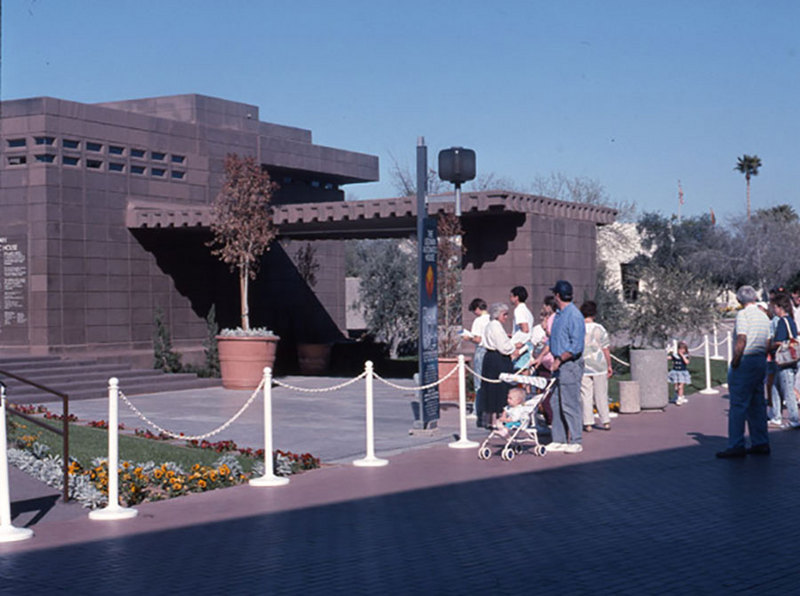Frank Lloyd Wright in the Valley
A Lasting Influence on Arizona Architecture and Design

Frank Lloyd Wright's iconic Taliesin West, nestled in the McDowell Mountains is a monument to the architect's philosophy of organic architecture.
Scotty's Blacksmith Shop, established in the late 1920s by E. G. Scott, once stood on the land now occupied by the Sugar Bowl. It was here that the gate to Frank Lloyd Wright's iconic winter home and school, Taliesin West, was forged. As the story goes, Wright swept into the shop trailed by a group of adoring protégées and enumerated at great length, and much to Scott's chagrin, the exacting specifications for his project. This small anecdote speaks to a deeper connection between the Valley and Frank Lloyd Wright.
Wright first arrived here in 1927 to assist on a project in Chandler that never came to fruition. He returned in 1929 to help Charles MacArthur design the Arizona Biltmore. Still, Taliesin West, nestled in the foothills of the McDowell Mountains, best exemplifies Wright's relationship with the Valley--a relationship in which the Valley's natural landscape functioned as his muse. In 1937, after purchasing the land on which Taliesin West Sits, Wright exuberantly deemed it to be "the top of the world." His keen appreciation of the beauty of the Arizona landscape provided a framework for his architectural endeavors here.
Taliesin West, in particular, is a monument to Wright's signature philosophy of organic architecture—architecture that does not sit conspicuously, obtusely, on the landscape but becomes a part of the landscape, works in harmony with its surroundings and nourishes the lives of its inhabitants. It symbolizes Wright's belief in the beauty of Arizona: "Arizona needs its own architecture . . . Surface patterned after such abstraction in line and color as find' realism' in the patterns of the rattlesnake, the Gila monster, the chameleon, and the saguaro, cholla or staghorn--or is it the other way around--are inspiration enough." Wright sought to be eminently respectful to the desert environment and natural land features as he judiciously managed Taliesin West's forms, materials, palette, and use of light. In this way, he attempted to develop a uniquely Arizonan architecture. In developing this architectural vocabulary, Wright left his greatest mark on the Valley. Today, numerous buildings, both those designed by him and those created by his admirers, mutely testify to his aesthetic influence and the inspiration that the built environment can derive from the natural landscape.
Audio
Images




